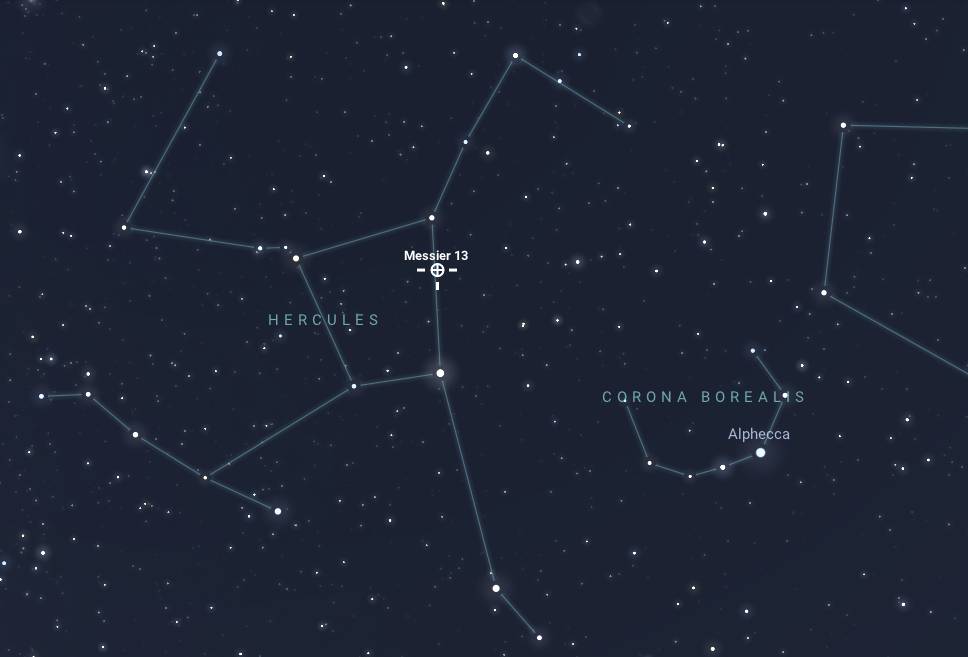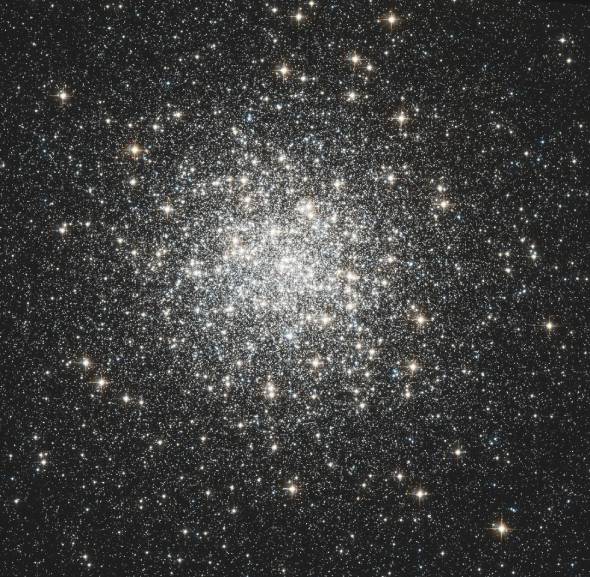Messier 3 (M3) is a spectacular globular star cluster situated in the constellation Canes Venatici, also known as the Hunting Dogs. Located approximately 33,900 light-years from Earth, M3 is one of the most prominent and well-studied globular clusters visible from the Northern Hemisphere. Discovered by Charles Messier on May 3, 1764, M3 holds the distinction of being among the first globular clusters catalogued and recognized as a distinct class of celestial object.
Composition
Messier 3 is a densely packed, spherical grouping of stars bound by gravity. Globular clusters like M3 generally contain hundreds of thousands to millions of stars, with M3’s estimated diameter extending around 183 light-years across. The stars within M3 are some of the oldest in the Milky Way, with an estimated age of around 11.4 billion years. This advanced age gives M3 a rich population of metal-poor, evolved stars that are deficient in elements heavier than hydrogen and helium.
The cluster’s stellar makeup includes many red giant stars, which are older, evolved stars that have exhausted the hydrogen in their cores. Additionally, M3 contains a unique population of blue stragglers—stars that appear younger and hotter than their neighbours. Blue stragglers are thought to form through interactions, likely due to stellar collisions or mass transfer between binary stars, leading them to burn hotter and appear bluer. Alongside these, the cluster also harbours some main-sequence stars (stars similar to the Sun but older) that can still be detected in the cluster’s dense core.
Observation
With an apparent magnitude of around 6.2, M3 is at the threshold of naked-eye visibility under exceptionally dark skies but can be seen more readily with binoculars or a small telescope. To the unaided eye or through binoculars, M3 appears as a faint, fuzzy patch of light, but telescopes with greater magnification reveal more of its dense, tightly packed stellar population.
The cluster is best observed from the Northern Hemisphere during spring, particularly from March to May, when it reaches a high point in the night sky. By June, M3 is still visible, though it dips lower on the horizon as the months progress, making it less ideal for observation. Observing M3 through a medium to large telescope can be a rewarding experience for amateur astronomers, revealing intricate details of its densely packed core and allowing observers to resolve individual stars at the cluster’s edges. Because of its relatively faint appearance, dark skies and minimal light pollution are recommended to fully appreciate the structure and beauty of this ancient star cluster.




